Why iron levels can drop
Iron deficiency is considered the most common nutritional deficiency worldwide, according to 2020 data that was published in the journal Anemia. Iron is key for storing oxygen in your red blood cells, and moving oxygen throughout the body while removing carbon dioxide. Unfortunately, the World Health Organization states that up to 27% of the world experiences iron deficiency anemia due to numerous factors, including diets low in iron (like vegan or vegetarian eaters), changes in the body (such as aging, growing children, and pregnancy), abnormalities in the gastrointestinal tract, and blood loss. Even heavy menstrual cycles can even cause a deficiency: 2013 research in Nigeria suggested the average woman can lose between three to 24 micrograms of iron during menstruation. That’s in comparison to the 50 to 170 micrograms per deciliter (mcg/dL) that the University of Rochester Medical Center suggests is a healthy level for a woman.
11 Iron-Rich Foods Everyone Should Have in Their Diet
Fortunately, iron deficiency symptoms can be relatively easy to identify and solve, depending on the severity. Here are iron deficiency signs to keep an eye out for. If you’re experiencing any of these symptoms, be sure to talk to a doctor for a proper diagnosis of low iron before simply turning to supplementation.
Get wellness wisdom every day from The Healthy @Reader’s Digest emails (they’re FREE!)

You feel tired and weak
Fatigue is probably the symptom most commonly associated with iron deficiency, says Ian Tong, MD, chief medical officer at Doctor On Demand. The reason for the exhaustion? A lack of oxygen flowing through your body. “When you have anemia, you have fewer blood cells to carry oxygen to vital organs of the body,” Dr. Tong says. “This oxygen deficit is global and can cause vague symptoms like fatigue, headache, and weakness.”
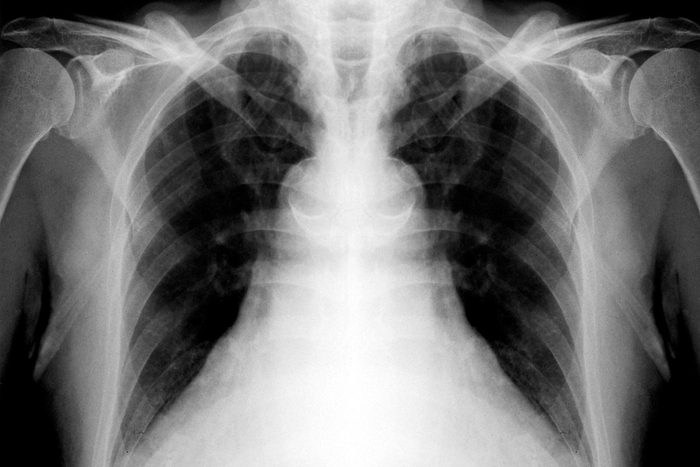
You’re short of breath
When you have iron deficiency, it’s hard for your body to get the oxygen it needs. That’s why the Cleveland Clinic‘s blog suggests that one of the more common signs of iron-deficiency (and its more serious form, anemia) is experiencing shortness of breath, explains Marc J. Kahn, MD, MBA, MACP, FRCP, a hematologist and medical oncologist who’s also dean of the Kirk Kerkorian School of Medicine and Vice President for Health Affairs at the University of Nevada, Las Vegas.
So if you now find yourself short of breath when you’re walking upstairs or engaged in other types of movement that were a piece of cake a few months ago, see your healthcare provider.

You develop restless leg syndrome
The National Institutes of Health says the disorder called restless leg syndrome creates a “pins and needles” feeling and prompts an unconscious urge to move your feet, which can disturb your sleep. Dr. Tong says this is one of the more unusual symptoms of iron deficiency.
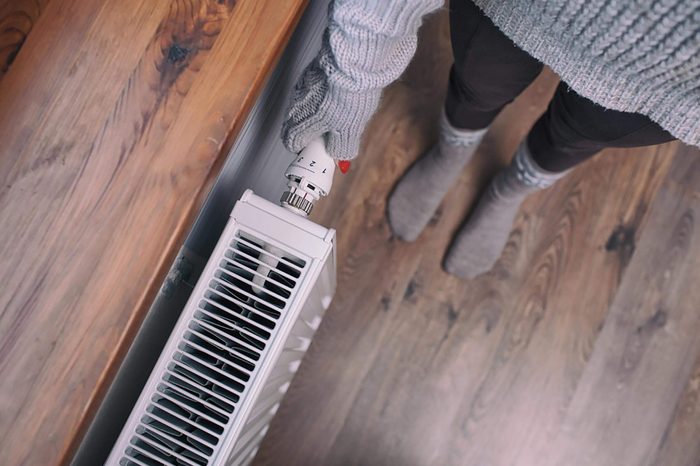
Your hands and feet may feel cold
The old saying “cold hands, warm heart” is true—your body is shunting the fewer red blood cells into the places that count, like your heart, brain and liver, says Dr. Kahn. Because there aren’t enough healthy hemoglobin cells moving through the blood when iron deficient, the body can experience poor circulation, resulting in cold extremities (and skin in general).

You may feel dizzy
Feeling dizzy or light-headed? Iron deficiency anemia could be to blame. “Dizziness or chest pain can also result because your body is trying to tell you to lie down and let more oxygen get to the heart or brain,” Dr. Tong says.
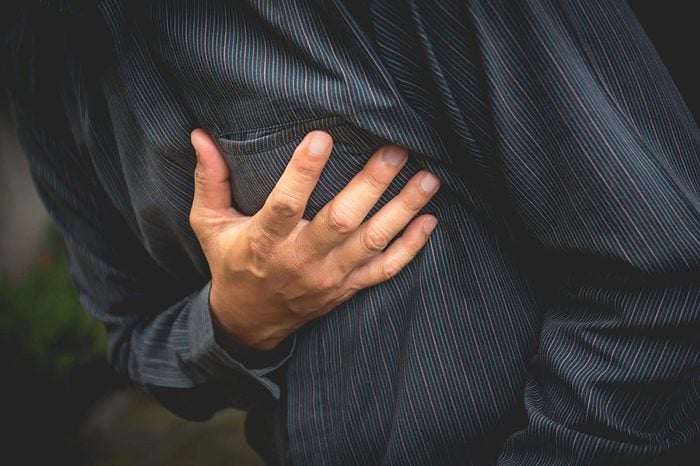
You might develop heart conditions
Because a loss of iron affects your red blood cell count, a shortage could cause your heart to work harder to deliver oxygen throughout the body—and cause you to develop heart murmurs or an enlarged heart. “People with diseases of the heart or blood vessels—also called cardiovascular disease—could suffer a heart attack or stroke if they develop iron deficiency,” Dr. Tong says.
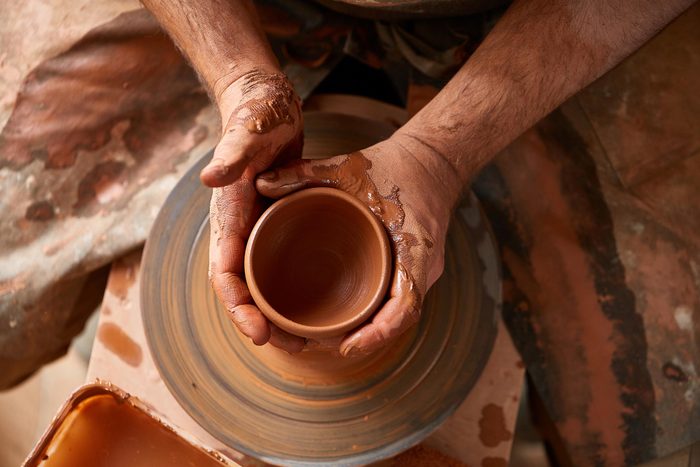
You might experience unusual cravings
The desire to eat weird things, known as pica, isn’t an uncommon sign of anemia. Unusual things people may suddenly crave if they’re not getting enough iron: clay, ice and dirt. According to a 2020 article in Cureus, ice pica in particular is often associated with iron deficiency. “As a hematologist, I would say they’re iron deficient until proven otherwise,” says Dr. Kahn.

You may become more irritable
If you’re getting more irritated at things that used to roll off your back, you may be in need of an iron supplement. “Irritability is more common with iron deficiency,” explains Dr. Kahn, adding that it’s not really that well understood why this might be so. “Probably because iron is used in several pathways in the body—most notably, it’s used in hemoglobin, which red cells need to deliver oxygen. So irritability might have to do with decreased oxygen delivery,” he says.
If you’re suddenly snapping, time to load up on the best sources of iron you could be missing.
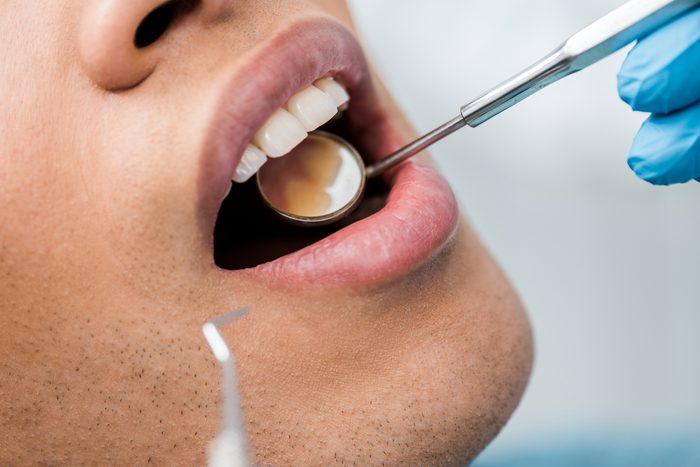
Your mouth may hurt
Your tongue and mouth can be a good indicator of what’s going on in your body (which is why dentists want you to check in every six months!). Ulcers in your mouth and cracks at the side of your mouth are fairly common signs of iron deficiency, says Dr. Kahn: “It probably has to do with decreased blood flow to the mucosa of the mouth.”
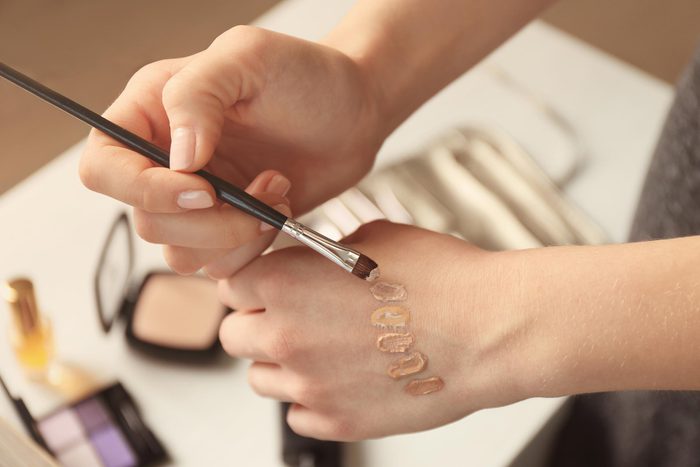
Your skin may turn pale
If you have an iron deficiency, your hemoglobin levels drop and, as a result, you look paler than normal, says Dr. Kahn. But your skin isn’t the only part of you that can turn a shade lighter. Your gums, the inside of your eyelids or lips and your nails can also turn a lighter hue.
Miranda Kerr Just Shared Her 4 Secrets for Gorgeous Skin, Low Inflammation, and Better Digestion

You might develop headaches
If you find yourself popping painkillers for headaches on a regular basis, iron deficiency anemia could be to blame. “When you have anemia you have fewer blood cells to carry oxygen to vital organs of the body,” Dr. Tong says. “This oxygen deficit can cause vague symptoms like headaches.” If your head bothers you on a regular basis, definitely tell your provider.
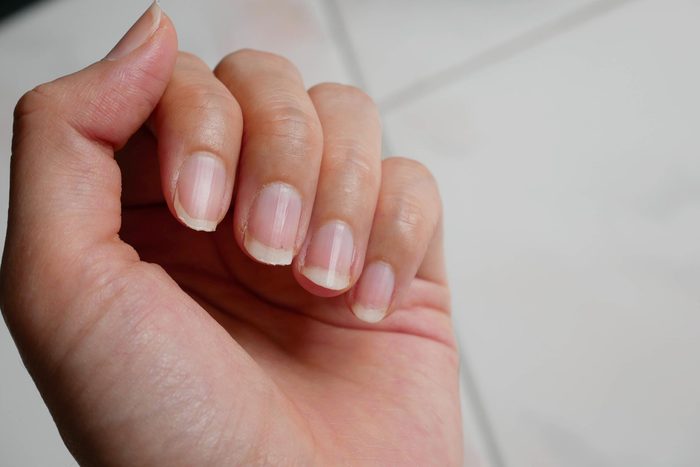
Your nails may change
Another not uncommon symptom of iron deficiency is called koilonychia, says Dr. Kahn. It causes nails to turn brittle and chip easily, and eventually, it can alter the shape of the nails. Another tell-tale sign: your nails have lines in them.
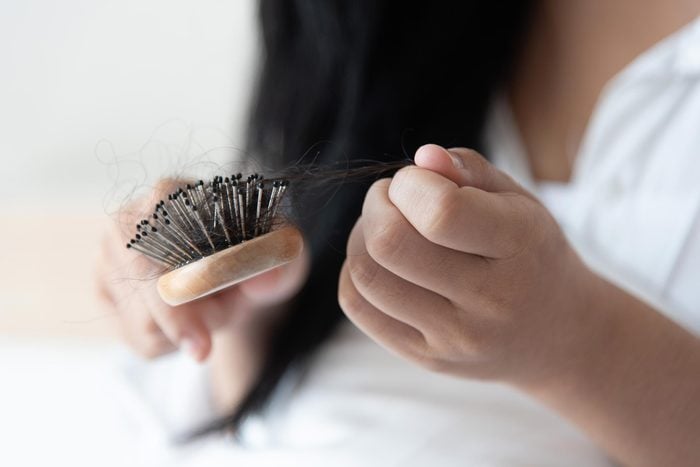
Your hair might change or fall out
Why would hair fall out because you’re not getting enough iron? “It probably has to do with blood flow to the hair follicle,” says Dr. Kahn. Yes, alarming, but it’s not a very common symptom (whew!). However, your hair and other parts of you can be good indicators if you’re running low on key vitamins.
- 40 Healthy Comfort Food Recipes That Satisfy
- What Is Vaginal Atrophy? Women’s Doctors Explain
- 7 Silent Signs Your Hair Is Desperate for Certain Nutrients
- The Best Exercises for Your Liver, According to a Liver Doctor
Additional writing and reporting by Kiersten Hickman.

